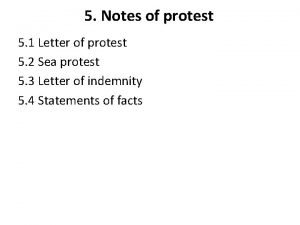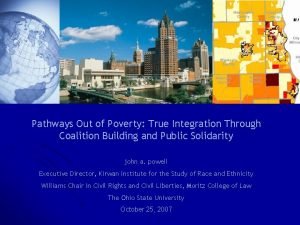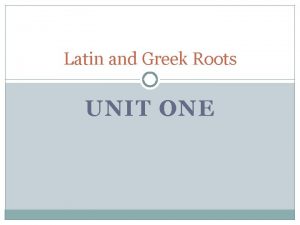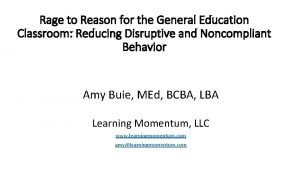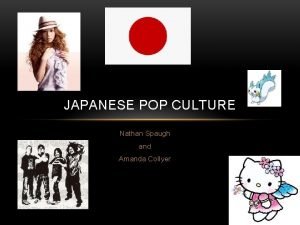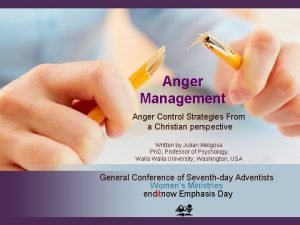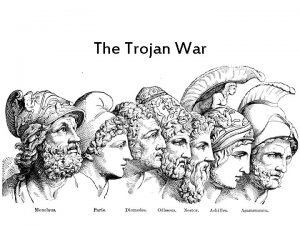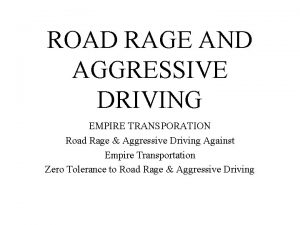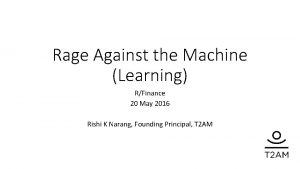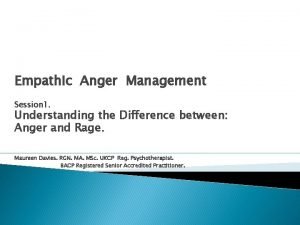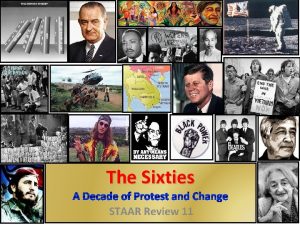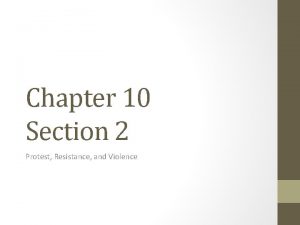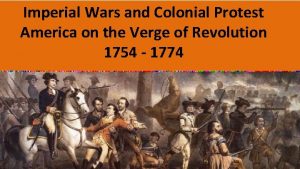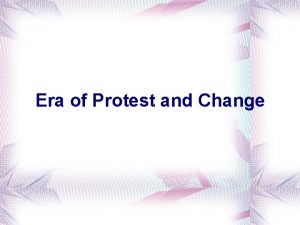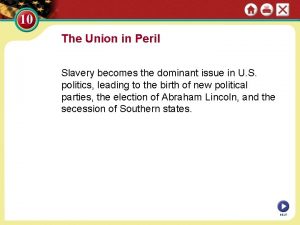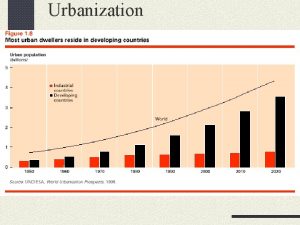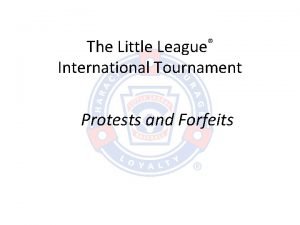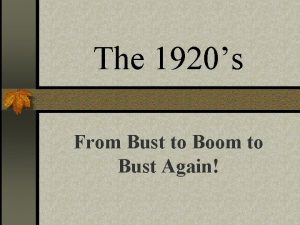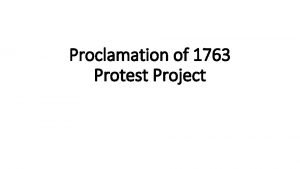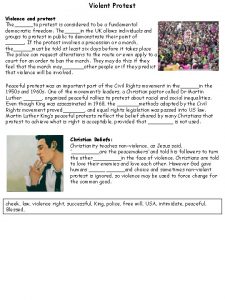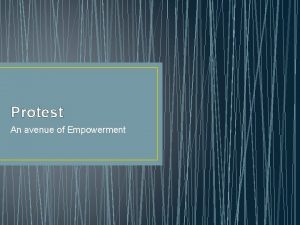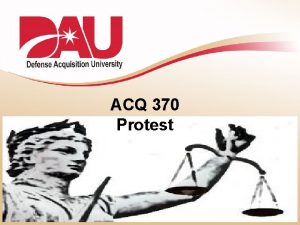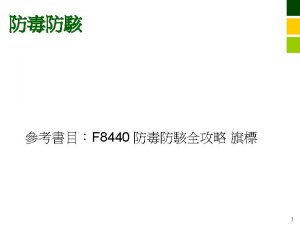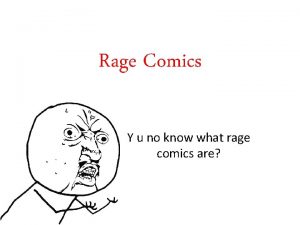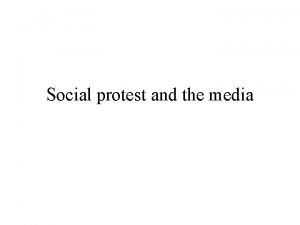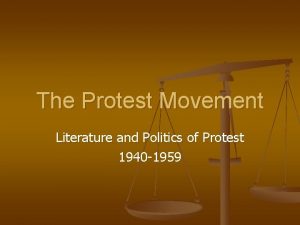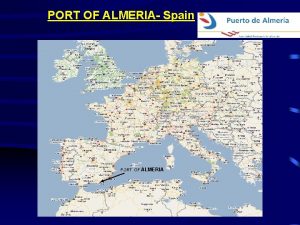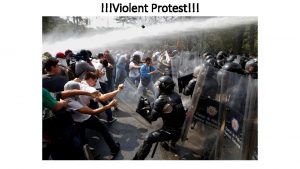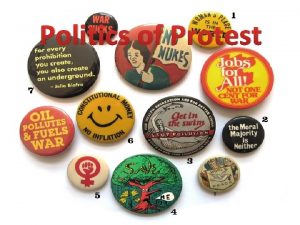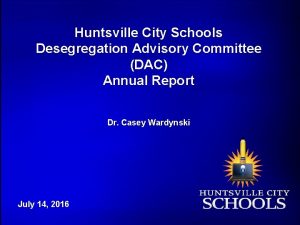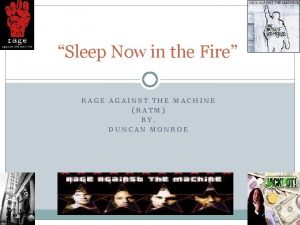Port City on Fire Protest and Rage Desegregation













































- Slides: 45

Port City on Fire: Protest and Rage, Desegregation and Rage, and Defiance of Jim Crow in Wilmington, North Carolina 1968 & 1971 Elizabeth Hines, UNCW Geography

The seeds of Wilmington’s Civil Rights era turmoil were planted in 1898.


Black-owned Wilmington Record burned, followed by the massacre of at least 60 Blacks 11/10/1898


Black prisoners being led away, 11/10/1898

1898 to 1968 70 years of Jim Crow

Wilmington’s African American community looked forward to Dr. Martin Luther King’s visit to the city on April 5, 1968, where he was to speak at Williston High School. However, Dr. King cancelled to continue his work on the Garbage Workers strike in Memphis, and was assassinated there on April 4, 1968.

A peaceful march by the Williston students was met by armed police in riot gear.


The April 1968 riots ranged across the north and south sides of Wilmington’s CBD.

4/7/68

4/9/68


4/9/68

4/5/58

l Williston Industrial High School prepared thousands of Black students for professions and vocations from the late 19 th century to 1968. l 1954 Brown v Board of Education mandated national school desegregation. l Student protests over the death of Dr. King, turned to riots in April of 1968. l In July of 1968, their high school was closed.

Williston Industrial High School The “heart of Wilmington’s Black Community” since 1874

And so, it came to pass, by federal order, in accordance with the Brown v Board of Education Supreme Court ruling of 1954, that Wilmington’s schools were finally segregated in the Fall of 1968 and all-Black high school students of Williston High School were sent to the formerly all-white high schools: New Hanover and Hoggard.


Williston

l For nearly two years, Black students fought with white students l Police were a constant presence in both schools l Black students complained that they were denied access to sports teams and academic clubs l In the Fall of 1970, a school boycott was organized.

The white pastor of Black Gregory UCC opened his church to the boycotters in January 1971.

On February 1, 1971, at Reverend Templeton’s invitation, the UCC Council on Racial Justice sent the Reverend Benjamin Chavis, aged 23, to Wilmington to organize the protest and aid the boycott.


Boycott Committee in Gregory Church, February 1971

A few blocks away, activism developed at the Church of the Black Messiah


Hemenway Hall protest, 2/5/71

In late 1970 and early 1971, 22 buildings were firebombed, including the School Board’s building, the Hemingway, shown here.

Mike’s Grocery, was a white-owned business in the Black community near Gregory Church. Mike Poulos was reputed to have slapped a Black customer and refused to sell alcohol to minors earlier on the day of the firebombing. At the trial in 1972, Allen Hall, the prosecution’s main witness, admitted his own role as one of the arsonists at Mike’s, who then, with Chavis, sniped at emergency personnel. He later recanted.

Over a period of 9 days in February 1971, violence moved back and forth across town, southto north-side. Dr. Bellamy’s records listed 45 arsons, 36 shootings, & 33 bomb threats.

Much of it was near Mike’s and Gregory Church. Two people died.

200 National Guardsmen rolled into Wilmington on Feb. 12/1971, finding Gregory Church empty.

l The following spring, the “Wilmington Ten” were arrested, tried, convicted, and imprisoned on false charges. l They were finally released after witnesses recanted. l The surviving members have petitioned the outgoing governor for a full pardon.


2/3/1971

2/4/1971

2/5/1971

2/6/1971

2/7/1971

2/8/1971

2/9/1971

2/10/1971

2/11/1971
 Note of protest example
Note of protest example Desegregation vs integration
Desegregation vs integration Write the features of mode 0 in 8255
Write the features of mode 0 in 8255 Parallel communication interface 8255
Parallel communication interface 8255 Hfss wave port size
Hfss wave port size Erg root word
Erg root word Two household both alike in dignity
Two household both alike in dignity Reichstag fire who was the fire starter
Reichstag fire who was the fire starter Damper fire alarm
Damper fire alarm Uttar pradesh fire prevention & fire safety rules, 2005
Uttar pradesh fire prevention & fire safety rules, 2005 A-e rwi
A-e rwi Extinguisher parts
Extinguisher parts How does kino feel trapped by his own ignorance
How does kino feel trapped by his own ignorance Rage to reason
Rage to reason The rage dont
The rage dont Onomatopoeia in caged bird
Onomatopoeia in caged bird Rage cycle
Rage cycle Rage
Rage Achilles father
Achilles father Road rage facts
Road rage facts Quiet road rage
Quiet road rage Rage against the machine learning
Rage against the machine learning Empathic anger definition
Empathic anger definition Intermittent explosive disorder
Intermittent explosive disorder Dr. markus junginger
Dr. markus junginger Rage group
Rage group Lafd interview questions
Lafd interview questions Tuba city fire department
Tuba city fire department North vancouver city fire department
North vancouver city fire department Chapter 14 the sixties a decade of protest and change
Chapter 14 the sixties a decade of protest and change Ib history paper 1 rights and protest past papers
Ib history paper 1 rights and protest past papers Chapter 10 section 2 protest resistance and violence
Chapter 10 section 2 protest resistance and violence Chapter 10 section 2 protest resistance and violence
Chapter 10 section 2 protest resistance and violence Imperial wars and colonial protest
Imperial wars and colonial protest Aqa a level english literature b past papers
Aqa a level english literature b past papers The sixties a decade of protest and change
The sixties a decade of protest and change An era of protest and change
An era of protest and change Seceding states of the confederacy
Seceding states of the confederacy History of latin american city model
History of latin american city model Cbd inner city suburbs
Cbd inner city suburbs Is mexico city a primate city
Is mexico city a primate city Branches of catholicism
Branches of catholicism Little league protest
Little league protest Chapter 5 section 4: the minor parties answer key
Chapter 5 section 4: the minor parties answer key Arresting canada protest
Arresting canada protest Proclamation of 1763 protest
Proclamation of 1763 protest
